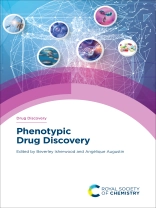Phenotypic drug discovery has been highlighted in the past decade as an important strategy in the discovery of new medical entities. How many marketed drugs are derived from phenotypic screens? From the most recent examples, what were the factors enabling target identification and validation? This book answers these questions by elaborating on fundamental capabilities required for phenotypic drug discovery and using case studies to illustrate approaches and key success factors. Written and edited by experienced practitioners from both industry and academia, this publication will equip researchers with a thought-provoking guide to the application and future development of contemporary phenotypic drug discovery for clinical success.
Innehållsförteckning
Phenotypic Drug Discovery: History, Evolution, Future; Development and Validation of Disease Assays for Phenotypic Screening; The Development and Use of Protein and Protein-affinity Libraries for Phenotypic Screening; CRISPR/Cas-based Functional Genomic Approaches to Phenotypic Screening; Contemporary Techniques for Target Deconvolution and Mode of Action Elucidation; Artificial Intelligence as an Enabler for Phenotypic Drug Discovery; Public–Private Partnerships to Advance Phenotypic Drug Discovery; Identification of a Novel Class
of Small Molecules for Spinal Muscular Atrophy Through High-throughput Phenotypic Screening; Antibody-based Phenotypic Screening – the Discovery of Oleclumab (MEDI9447); Use of Phenotypic Screening in Mice in the Development of a Novel Non-D2-Receptor-Targeting Drug for the Treatment of Schizophrenia; Phenotypic Screening for Drug Discovery in Tuberculosis; Why an In Vivo Screening Platform Covering Broad Therapeutic Spectrum is an Ideal Tool for Drug Repositioning: Illustrated by Discovery of a Novel Class of Insulin Sensitizers; Phenotypic Screen Leads to Identification of Novel Posttranscriptional Regulation Machinery for HBV











